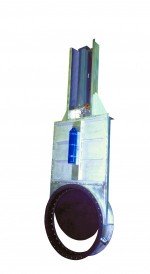When Possible, Choose Vertical. Here’s Why.
Forty years ago, before many of today’s manufacturing techniques were in use, stem and disc misalignment were essentially nonissues. These days, however, the orientation in which valves are installed makes a real difference in terms of how many misalignment issues manufacturers will run into over the life of the unit.
 Ideally, all linear valves should be installed vertically so that gravity can lend a hand. Vertical installation puts the stem in alignment with the disc while also aligning the disc to the necessary guides within the valve body. It’s clear to see why vertical installation leads to optimal performance.
Ideally, all linear valves should be installed vertically so that gravity can lend a hand. Vertical installation puts the stem in alignment with the disc while also aligning the disc to the necessary guides within the valve body. It’s clear to see why vertical installation leads to optimal performance.
That said, many plants aren’t capable of housing the valves vertically and require horizontal installation. The API (American Petroleum Institute) requires valves built to standard to be usable in any orientation—and they are usable; the long-term costs associated with repair and upkeep, however, are worth noting.
Hardfacing can certainly help, but it is not a cure-all for the operational damage associated with horizontal valve installation. Damage can even occur to the valves during the shipping process if they spend lengthy time in the horizontal positions. Be sure to communicate with the supplier to request vertical shipment or at the very least to be made aware of how long horizontal orientation will be used.
Take extra time during installation or repair to ensure that all pieces are functioning properly without the occurrence of any scratching. These precautions can help to avoid a costlier repair down the road that requires removal of the valve.

